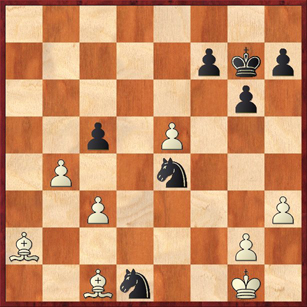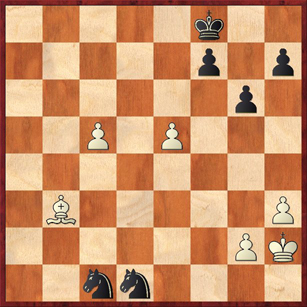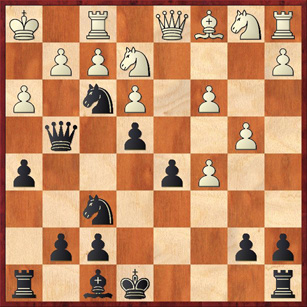Today is my 20th wedding anniversary, and Kay and I are going to celebrate by leaving (tomorrow) for a five-day trip to Hawaii. We will stay on Kauai, the northernmost of the Hawaiian islands, which everyone tells us is the most beautiful and least touristy of the group. Even though it’s off-topic, I will probably post some pictures from our trip on this blog after we get home. What good is a blog, after all, if you can’t post your travel pictures?
In the meantime, don’t expect any updates of this blog for the next few days, because I am sure that Kay would not approve of my blogging while we are on vacation. She has already told me that no work is allowed on this trip. Now one of my clever readers will probably say, “Wait a minute! Blogging isn’t work!” And while that may be technically true, let me give you a hint — you don’t stay married for 20 years by arguing over technicalities!
(Actually, I do quarrel over technicalities more often than I should. Memo to self: Just chill out.)
While I’m chillin’ in Hawaii, I will give you one more chess post to pass the time. On Saturday night some of my chess friends came over — Gjon, Cailen (whom I wrote about recently) and Theo. We had a good time and gorged ourselves on Chex Mix and cookies until about 10:30 pm, when Cailen said, “I can’t think any more because I haven’t eaten dinner yet!” At that point we broke the party up and Cailen presumably went to get some real food while I went to bed.
Both Cailen and Theo brought recent games they had played, and with their permission I will share some interesting moments with you.
Theo went to a game/45 tournament at the Mechanics Institute in San Francisco a week ago. It was sort of a strange tournament for him because he only played three out of five games: He had a half-point bye in round 1, and his opponent forfeited in round 5. Of the games he played, the only one he won was against a 1200 player. In the other two games, Theo (whose rating is 1500-something) lost to a 1600 player and a 2400 player (Ricardo de Guzman) — which shows the wide range of opposition you are likely to face at the Mechanics. He was disappointed by the game against de Guzman, because he felt that he didn’t put up a good showing. But actually, I think that de Guzman played a very impressive attack. Gjon said that this is the sort of game that Theo should study closely and try to learn from.
But the positions I’ll show you are from the game that Theo won. Theo outplayed his 1200-rated opponent in the early stages, won a pawn, and then got overconfident. He said that throughout the game, he was thinking, “I’ve got the two bishops,” as if that meant he should be winning. But in the diagrammed position, White’s bishops are about to be trampled by a thundering herd of knights!
Black to move. Which way should he take on c3, and why?
White has just played 30. b4, which I think is a good move, trying to open lines for the bishops and mobilizing White’s extra pawn on the queenside. But Theo told us that Black is actually winning here! Gjon, Cailen and I were all a bit skeptical of this, and with computer analysis it turns out it’s not true. White can save a draw. Still, it’s quite impressive how close Black is to winning this game, even though he is a pawn down and has “only” the two knights against two bishops.
The correct capture is 30. … Ndxc3, because Black needs to maintain contact with the c-pawn. In our hasty analysis on Saturday we somehow overlooked the move 31. bc!, which is White’s only way to save the draw. Even though both of the bishops are en prise (the a2 bishop can be taken immediately, and the c1 bishop can be taken after a fork on e2), Black does not have time to take either one! And after 31. … Nxc5 it should be a routine draw, with all the pawns on one side of the board.
Instead, Theo’s opponent played 30. … Nexc3??, which should lose, and in fact he did eventually lose on time. However, there was one other interesting moment after 31. bc Kf8 32. Bb3 Ne2+ 33. Kh2 Nxc1 (see diagram).
White to play and win.
Here Theo played the routine recapture 34. Bxd1?, which should only draw. Because his opponent only had seconds left on his clock, Theo was able to win anyway, but it is instructive to see how White should have played this position. He can win with 34. c6! Ke7 35. Bxf7!! Black’s king cannot take the bishop because the c-pawn would promote. But otherwise, White has the simple and unstoppable threat of c7 followed by e6+ and e7, promoting the e-pawn instead.
The moral is that there is no such thing as an “automatic recapture.” You should always (at least, if you have enough time) pause to see if there is an in-between move or some other tactical trick that might be better. In this case, the clue is that White’s pawns are so advanced, while Black’s knights are so far away. In such a position, time is of the essence. If Black is given one extra tempo he will be able to stop the pawns, so White needs to strike immediately.
Cailen’s game was a little bit more savage. This was a game played on the Internet, probably at a rapid or blitz time control, which explains some of the blunders. Nevertheless, it has an enjoyable finish.
Unknown – Cailen Melville
1. d4 d5 2. e3 Nf6 3. Bd3 c5 4. c3 Nc6 5. dc e5 6. b4 e4 7. Bb5 …
Because of White’s loss of a tempo (Bd3 followed by Bb5), White is now playing Black. We could get to exactly the same position, with colors reversed, after 1. d4 d5 2. c4 c6 3. Nc3 e6 4. Nf3 dc 5. e4 b5 6. e5 Bb4.
7. … bd7 8. Ne2 Ne5 9. Bxd7+ Qxd7 10. O-O Qg4?! 11. h3?! …
Cailen’s 10th move was definitely a speed-chess move, with more bark than bite. However, White definitely had better ways to take advantage of it, such as 11. Nf4 or 11. Nd4.
11. … Nf3+?! 12. Kh1 h5!
Any time you can offer a sound queen sacrifice in speed chess, you will probably win the game. The psychological effect is just so strong. Of course, if 13. hg4?? hg4 is checkmate. But White, if he had time, should take a deep breath here and say, “Okay, let’s just look at things logically. Black has two pieces hanging. If I just defend the checkmate, then there is no way that he can save both pieces.” And with a few minutes of reflection, he would probably find 13. Ng1!, which totally refutes Black’s attack. However, he doesn’t have a few minutes, and so he plays
13. Ng3? h4!
Marvelous! Cailen reiterates the queen sacrifice, this time playing the discovered checkmate on a different square. Now if 14. hg4 it’s 14. … hg3 mate. But once again, if White doesn’t panic there is nothing wrong with his position. He can simply move his knight back to e2, and now Cailen doesn’t have any more discovered checks on the h-file! Cailen would have to play something like 15. … Qd7, and White would then be fine as long as he doesn’t take on f3. Cailen’s problem is that he would like to move his queen to the b8-h2 diagonal to threaten checkmate, but he needs to keep his queen on the c8-h3 diagonal to stop White from taking the knight on f3. The queen, unfortunately, can’t be in two places at once!
But it’s speed chess, and so Cailen’s opponent panics.
14. Nd2?? hg 15. fg and now Cailen has a pleasant choice. Sacrifice the queen for mate in three, or sacrifice the rook for mate in two? He decides to go the more efficient route. 15. … Rxh3+! and White resigns.
I think this gives you a good idea of Cailen’s creative attacking style. I think the big question is whether he can translate it to tournament chess with slower time controls. I really hope that he will give it a try.






{ 1 comment… read it below or add one }
Ok Dana this silence has gone on long enough. Time to tell Kay to let you post 🙂
Hope you two are having a great time